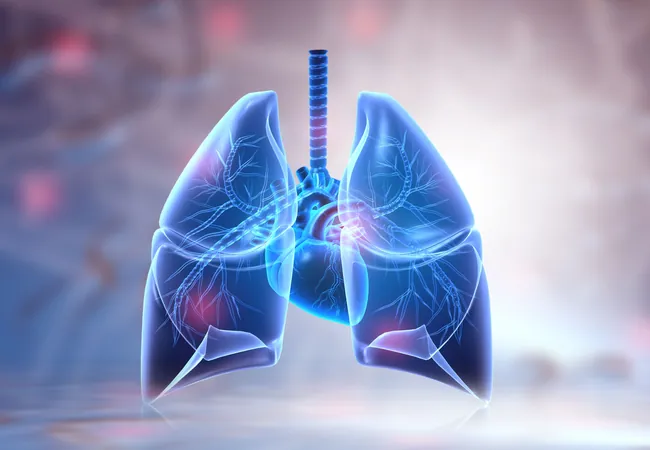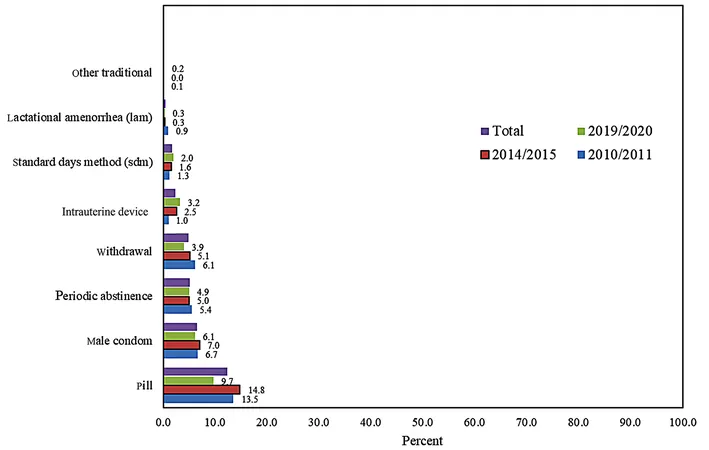
New Study Raises Doubts on Intratracheal Budesonide's Effectiveness in Preventing Bronchopulmonary Dysplasia in Premature Infants
2024-11-13
Author: Siti
Understanding BPD: A Major Risk for Premature Infants
Bronchopulmonary dysplasia, a significant and common complication among infants born before 28 weeks of gestation, affects nearly half of these vulnerable newborns, which translates to about 600,000 cases annually worldwide. Babies who survive BPD face a higher likelihood of respiratory problems, asthma, and adverse neurodevelopmental outcomes compared to those who do not develop the condition.
Despite ongoing efforts to determine the safest and most effective regimen of anti-inflammatory corticosteroids, considerable uncertainty remains. While systemic corticosteroids have shown promise in reducing BPD risk, administering them early or in high doses can lead to unintended consequences, including an increased risk of cerebral palsy among survivors. Inhaled corticosteroids, which are often used during prolonged neonatal care, have also been linked to a rise in mortality, highlighting the delicate balance healthcare providers must navigate when treating these fragile patients.
Previous Research and Study Design
Previous trials hinted at the potential benefits of intratracheal budesonide, which, when mixed with surfactant, was linked to a significant reduction in the combined risk of death or BPD. In light of these findings, some medical centers had begun integrating intratracheal budesonide into their treatment protocols. However, the need for more extensive trials to establish the treatment's effectiveness across a broader demographic of extremely preterm infants has been emphasized by researchers.
To investigate this further, the current trial, named Preventing Lung Disease Using Surfactant + Steroid (PLUSS), aimed to evaluate whether intratracheal budesonide could indeed benefit this vulnerable population.
Conducted in 21 neonatal units across Australia, New Zealand, Canada, and Singapore, the study was randomized and double-blind. It involved infants born at less than 28 weeks of gestation, all under 48 hours old and receiving either mechanical ventilation or non-invasive respiratory support with a recommendation for surfactant treatment.
Key Findings and Implications
In total, 1,059 infants were included in the analysis, with a balanced selection between those receiving budesonide mixed with surfactant and those receiving surfactant alone. The trial revealed that only 25.6% of infants in the budesonide group survived free of BPD, compared to 22.6% in the surfactant-only group—a statistically insignificant difference. Notably, 83.2% of such infants in the budesonide group were alive at the primary endpoint of 36 weeks postmenstrual age, compared to 80.6% in the surfactant-only group.
Ultimately, the authors concluded that for extremely preterm infants experiencing respiratory distress and receiving surfactant, early intratracheal budesonide did not significantly mitigate the risk of developing BPD at the critical age of 36 weeks. They pointed toward the necessity of assessing long-term outcomes, including a follow-up at two years, to better understand the role of intratracheal budesonide in clinical settings.
Final Thoughts
As the medical community continues to grapple with the complexities of treating extremely premature infants, this study underscores the critical need for ongoing research and evaluation of treatment strategies. The results, along with forthcoming trials, will be pivotal in shaping future guidelines and ensuring the best possible outcomes for these at-risk newborns.



 Brasil (PT)
Brasil (PT)
 Canada (EN)
Canada (EN)
 Chile (ES)
Chile (ES)
 España (ES)
España (ES)
 France (FR)
France (FR)
 Hong Kong (EN)
Hong Kong (EN)
 Italia (IT)
Italia (IT)
 日本 (JA)
日本 (JA)
 Magyarország (HU)
Magyarország (HU)
 Norge (NO)
Norge (NO)
 Polska (PL)
Polska (PL)
 Schweiz (DE)
Schweiz (DE)
 Singapore (EN)
Singapore (EN)
 Sverige (SV)
Sverige (SV)
 Suomi (FI)
Suomi (FI)
 Türkiye (TR)
Türkiye (TR)